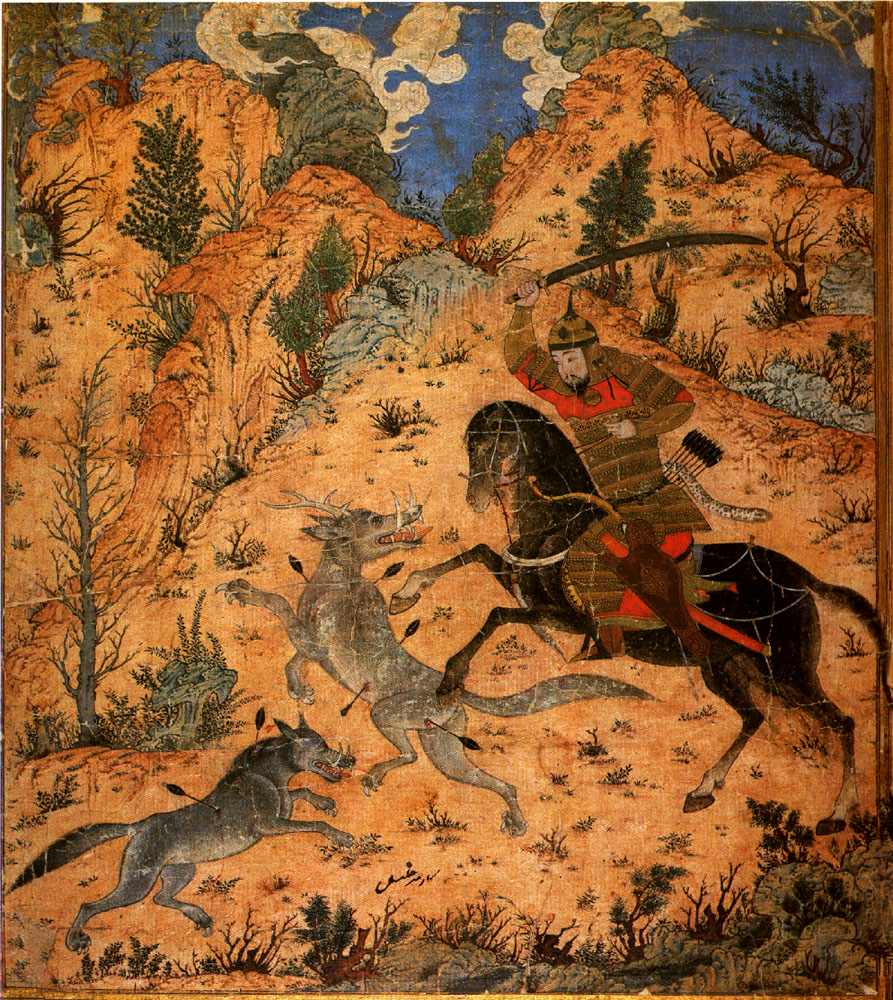Create an Amazon Wedding Registry

Join Amazon Prime - Watch Thousands of Movies & TV Shows Anytime - Start Free Trial Now
Isfandiyar's first labour: he fights the wolves
Illustrations of Jalayrids from a late 14th Century Shahnama
The figures wear contemporary dress or dress of no latter than the date of the illustrations.

Isfandiyar fights with the Wolves
Shah-nama.
From the Sarai Albums
Tabriz, ca. 1370
Hazine 2153, folio 73b
Source: Mongols and Painting under the Jala'ir
Isfandiyār Killing the Wolves: First Stage (fig. 20).
In Isfandiyār’s expedition to Turan in which he and his army are accompanied by his brother and his vizier, he is guided by his prisoner Gurgsār.
They halt at a crossroads.
Isfandiyār threatens Gurgsār with death if he does not act as a loyal guide, to which Gurgsār replies that there are three roads he can follow:
the journey over the first would take three months, the second two months, and the third would take only a week but was infested by lions, wolves, dragons and witches.
Isfandiyār prefers the third as it is the shortest even though it is full of danger.
To complete the first stage of the journey he has to fight two monstrous wolves, one male and the other female.
He weakens them by shooting arrows into them and then finishes them with his sword.
The ground is painted a warm beige color.
The incident takes place within a triangle dotted with grass tufts and shrubs of different kinds.
On both sides and above we see rocks, between which white clouds and a light blue sky are visible.
Also blue-grey rocks extend along the bottom of the painting.
In the center of the triangle is Isfandiyār, wearing a beautifully decorated gold armor.
He is about to deal the huge wolf, with grey horns and long teeth, a blow with his sword.
Both wolves have shafts of arrows sticking out of their bodies.
Near the bottom of the picture, in the middle, is written “Kār-i Mir Halil” (the work of Mir Halil).
Although Isfandiyār and the two wolves constitute a second triangle within the larger triangle,
there is no trace of rigidity about the composition which has been very skillfully handled.
Text source: "Four Istanbul Albums and Some Fragments from Fourteenth-Century Shah-Namehs" by Nurhan Atasoy, pp. 19-48 in Ars orientalis; the arts of Islam and the East Vol. 8 (1970)
Back to Illustrations of Jalayrid Mongols
See also Persian Cavalryman c.1375 in Armies of the Middle Ages, Volume 2 by Ian Heath, based on this Jalayrid Shahnama. Fatih Album (Topkapi Sarai, Hazine 2153).

